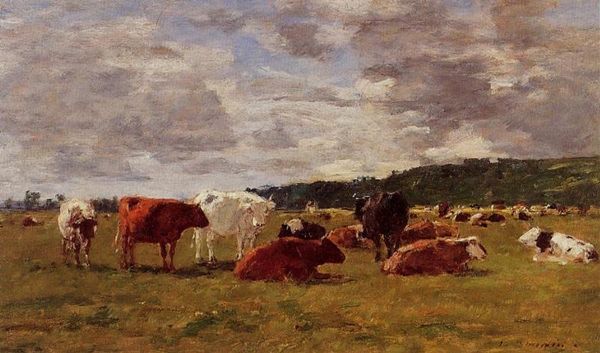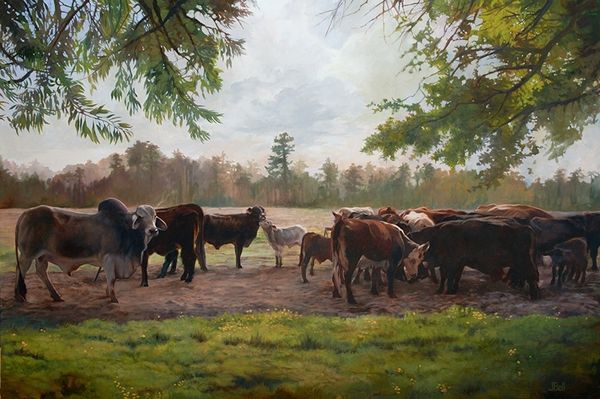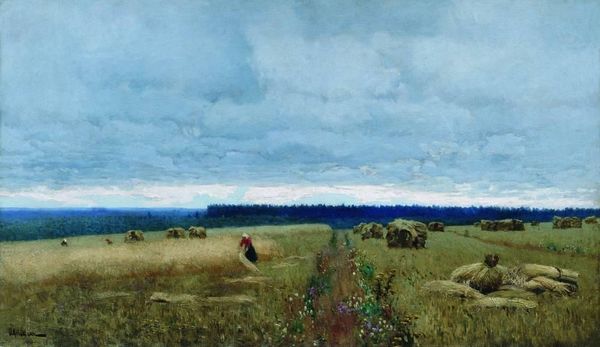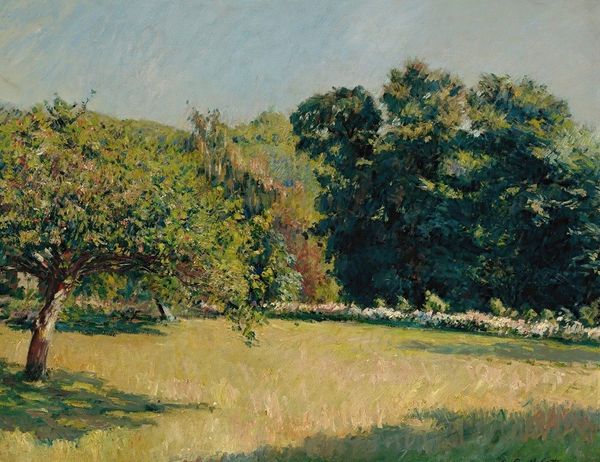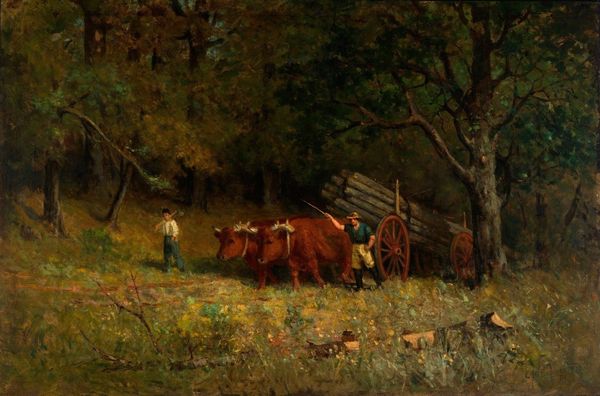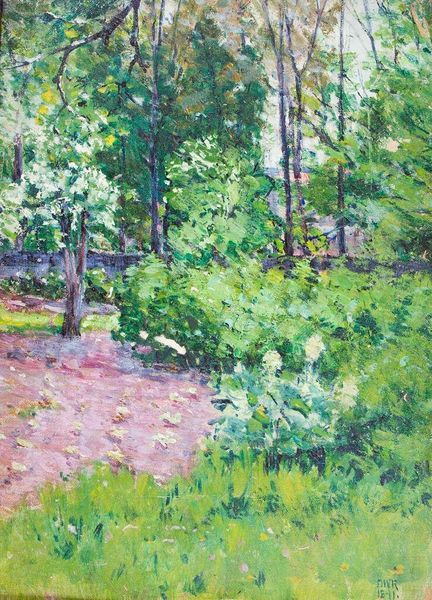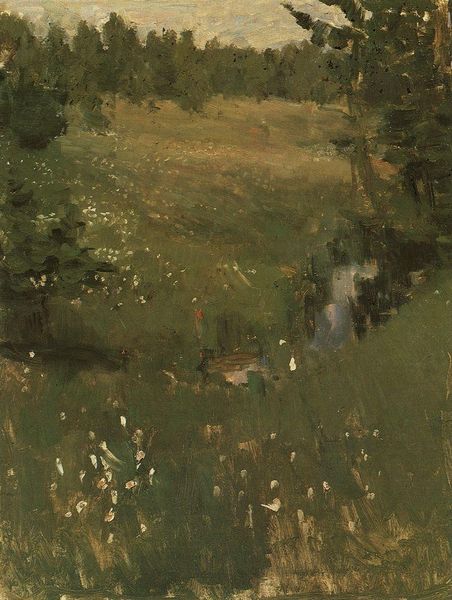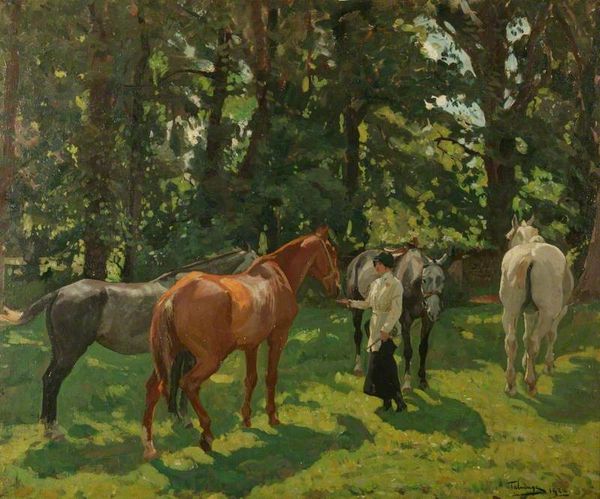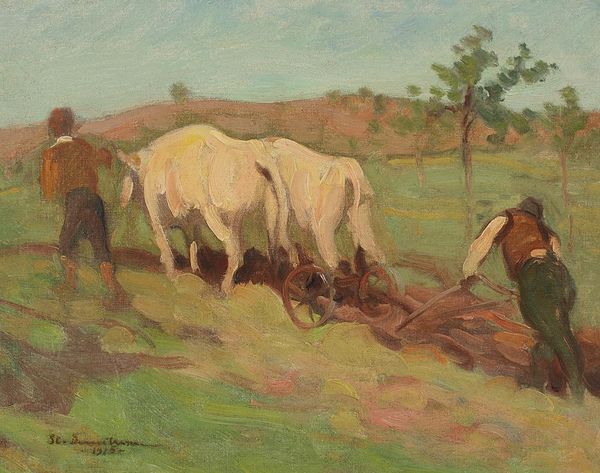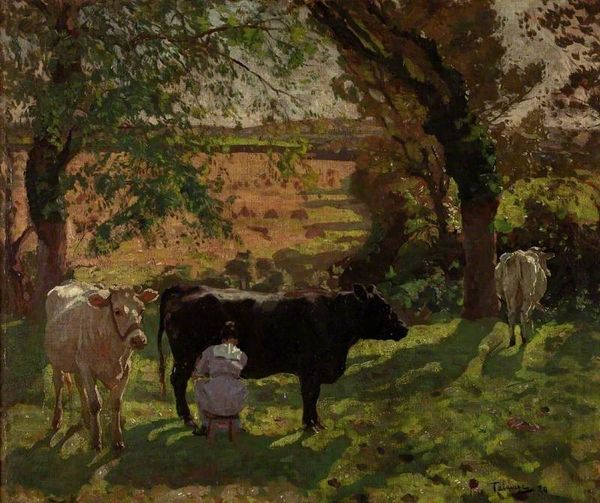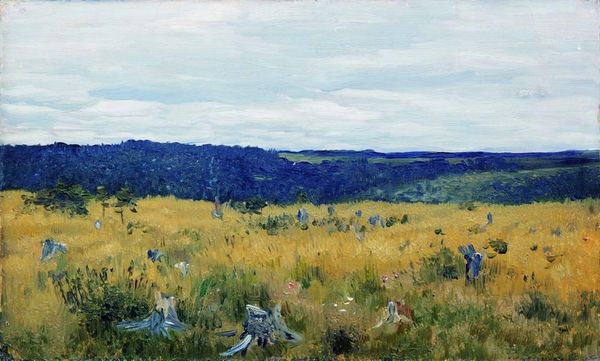
plein-air, oil-paint
#
tree
#
animal
#
impressionism
#
grass
#
plein-air
#
oil-paint
#
landscape
#
impressionist landscape
#
nature
#
genre-painting
#
nature
Copyright: Public domain
Editor: We’re looking at Volodymyr Orlovsky’s “Edge of a Wood,” painted in 1888, using oil paints probably en plein air. The greens and browns create this feeling of cool shade. What do you make of the way he has structured the composition, focusing on pure form and color? Curator: Notice the interplay of light and shadow; how the eye is guided by the careful distribution of tonal values. The artist's structural approach is less about mimetic representation and more about the inherent qualities of the paint itself. Are you drawn to how Orlovsky uses visible brushstrokes? Editor: Yes, the way the brushstrokes create texture in the grass, and the broken color in the shadows. It almost dissolves form! I'm interested, do you think it fully abandons representational qualities, despite it seemingly depicting cows under trees? Curator: It doesn’t abandon it entirely but subordinates it. Consider how the mass of the tree on the left dominates the pictorial space. It serves not as a literal tree, but a formal device anchoring the composition. It structures the entire scene and your view. It seems to invite us to delve more deeply into the very nature of visual experience. Editor: I see what you mean. Focusing on that contrast changes everything! I guess I was too focused on the pastoral imagery to see how actively the structure operates on our viewing experience. Thank you. Curator: It highlights how an artist's formal decisions impact our perception, guiding our interaction and allowing us to consider the nature of art in this captivating impressionist rendering of a natural setting.
Comments
No comments
Be the first to comment and join the conversation on the ultimate creative platform.
